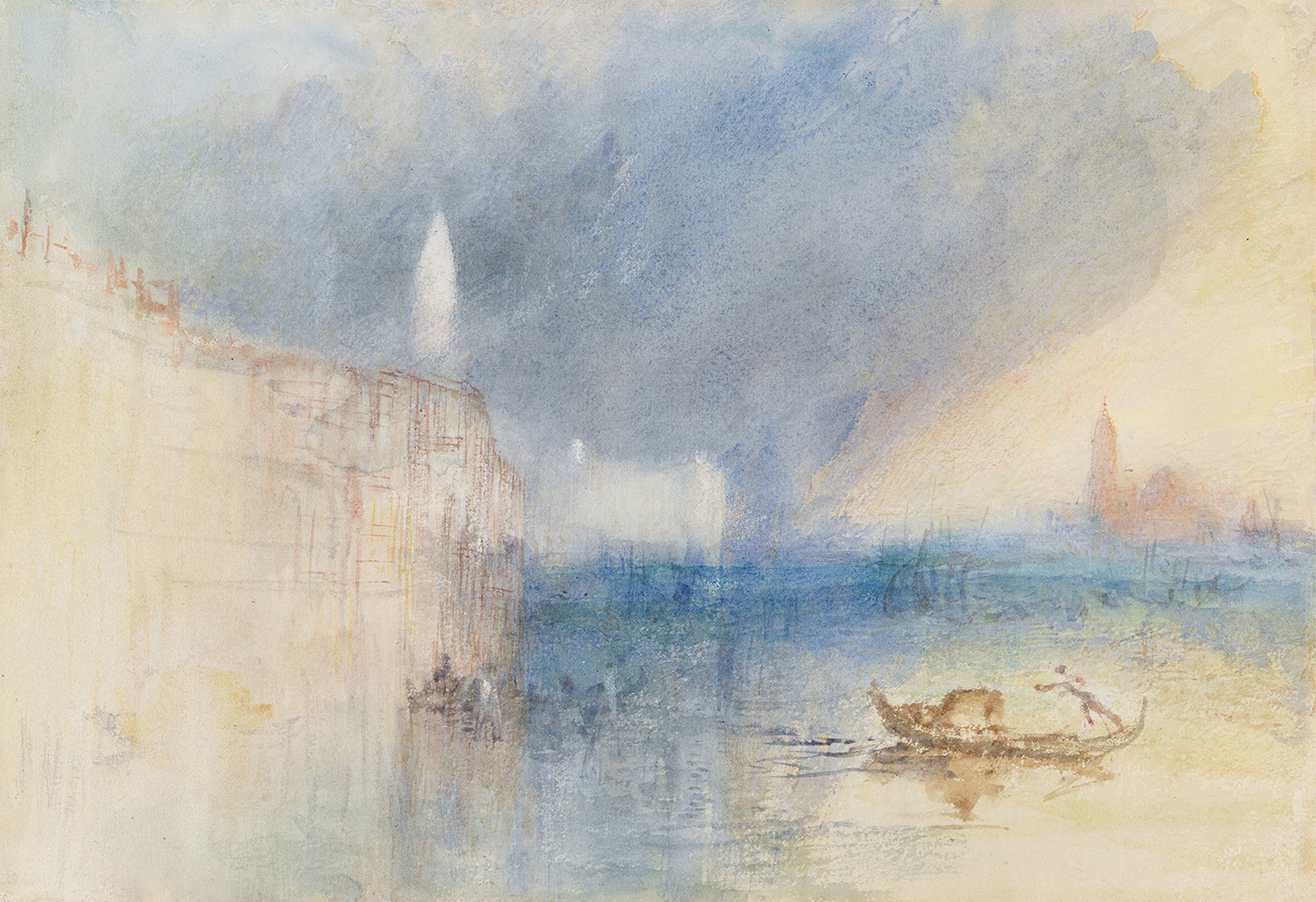 Joseph Mallord William Turner (1775-1851), Storm at the Mouth of the Grand Canal, Venice, c.1840. Image National Gallery of Ireland
Joseph Mallord William Turner (1775-1851), Storm at the Mouth of the Grand Canal, Venice, c.1840. Image National Gallery of Ireland

Follow this step-by-step activity to create your own landscape painting with some unusual materials!
You'll find all the materials and instructions listed below. Let's get started!
Watch the video!
Because of new e-privacy measures on our site, you'll need to click on the cookie symbol in the bottom-left corner of this page and tick the boxes to accept statistics and marketing cookies in order to watch this video. Or, scroll down to read the instructions instead!
Materials and instructions
You will need:
- Cardboard
- Paint brush
- Scissors
- Paper clips or sticky tape or a glue stick
- Paper
- A cup of cold coffee and a cup of cold tea
- Some patience!
Instructions:
- Brew very strong cups of tea and coffee (ask an adult to help you). Leave them to cool, and make sure they are cold before you start!
- Use the tea and coffee to paint a picture of a landscape.
- Can you see that the tea is a lighter colour than the coffee? You can use the tea for large areas, like the sky, and then use the darker coffee to add details.
- You could add in trees or buildings. What kind of weather will you include? Maybe a cloudy sky?
- You could also paint an abstract picture of shapes and lines. Try alternating the tea and coffee for different shades.
- Now comes the experiment! We're going to cover bits of the painting and expose it to sunlight so that parts of it fade!
- Cut out a piece of cardboard and use paper clips to attach it to your painting.
- Or, you could use a couple of pieces of cardboard. Make sure you only cover a bit of the painting.
- If you don't have paperclips, you can use tape or glue to attach the cardboard to the edges of your painting.
- Leave your picture indoors on a windowsill and wait! You'll need to be patient - it might take a week for the colours to fade.
- When you remove the cardboard you will see how the sun has made the colours fade. The parts that were covered will be much darker. This can happen to watercolour paintings if they are exposed to sunlight.
Share your artwork!
Would you like to see your artwork featured on the Gallery's website? Take a photo of your artwork and send it to us by email ([email protected]) or using this online form to upload your picture. We'll feature a selection of pictures in the Creative Challenge Gallery, so check back to see if yours is included!
Upload a picture of your artwork using this form
Inspired by ...
 Joseph Mallord William Turner (1775-1851), Storm at the Mouth of the Grand Canal, Venice, c.1840. Image National Gallery of Ireland
Joseph Mallord William Turner (1775-1851), Storm at the Mouth of the Grand Canal, Venice, c.1840. Image National Gallery of Ireland
The Gallery has a beautiful collection of watercolours by English artist J.M.W. Turner. He liked to paint landscapes with dramatic weather and light, like this one of a storm at the mouth of the Grand Canal in Venice, Italy. Watercolours are delicate works of art that can be damaged by sunlight.
Credits:
Activity by Kate Drinane, National Gallery of Ireland.
About our Gallery at Home videos:
Inspired by works in our collection and exhibitions, our creative activities encourage families to work together to create their own artworks. They are specially produced videos for babies, older children and for those who require sensory input. You can find all the workshops in this series here. Enjoy!
Explore more
-

Six things to know about Turner & Place: Landscapes in Light and Detail
Some interesting nuggets of information.
-

National Gallery at Home: Self-Portraits
Video: Draw a colourful self-portrait.
-

National Gallery at Home: Reflecting Faces
Video: Make your own printed portrait.
-

Resources for Schools \ Acmhainní do Scoileanna
Downloadable resources for students and teachers
